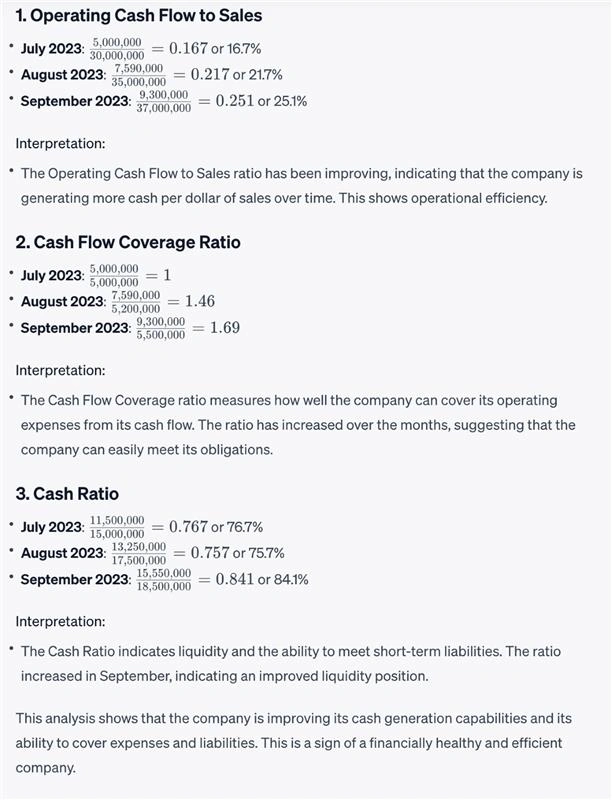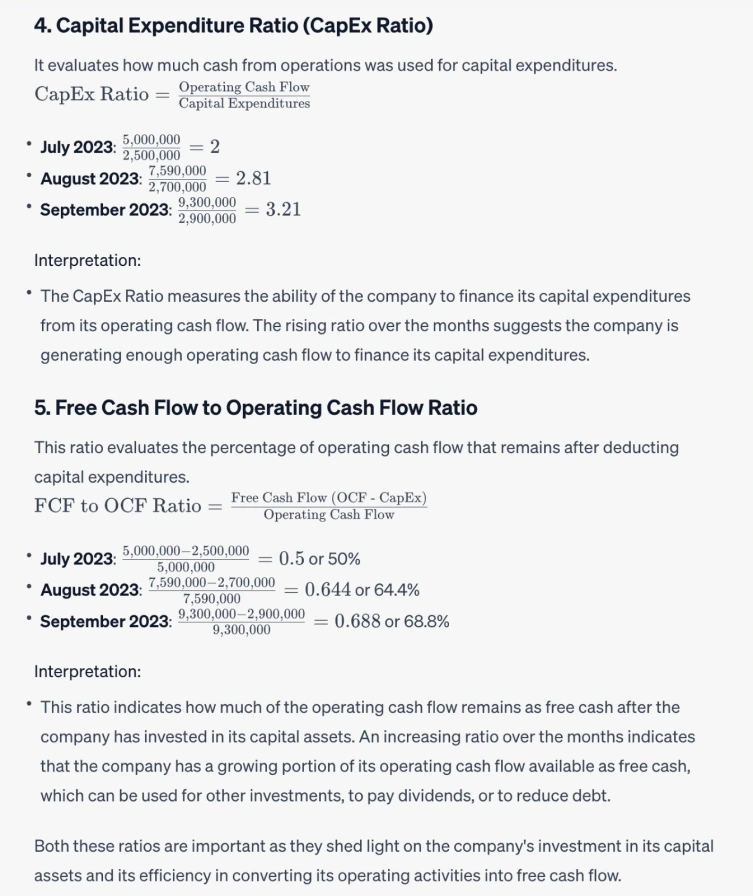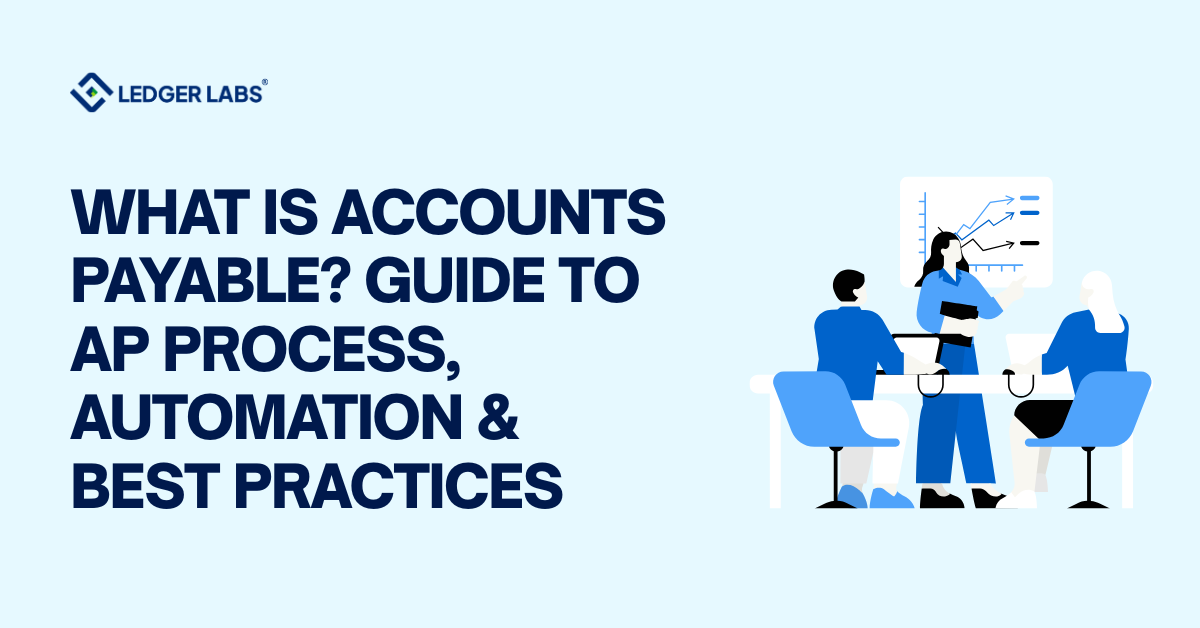Managing money can be confusing, right? You look at a Cash Flow Statement and see a bunch of numbers and terms that make your head spin. Not understanding these statements can lead to big mistakes, like making poor investments or running out of money for your business. But don’t worry! Our Ultimate Guide to Reading Cash Flow Statements will break everything down with easy-to-follow examples and templates. By the end, you’ll know exactly how to read these important documents to make smarter financial choices.
1. Understanding your cash flow helps e-commerce retailers manage inventory, plan for seasonal spikes, control customer acquisition costs, and make smarter investment decisions.
2. Breaking down cash flows into operating, investing, and financing activities gives you a clear picture of where your money comes from and where it’s going — essential for assessing your business’s financial health.
3. While both methods lead to the same bottom line, the direct method offers more transparency and is often better suited for small to midsized businesses, making cash flow patterns easier to grasp.
4. Patterns in your cash flow statement — like consistently positive operating cash flow or fluctuating cash balances — can highlight operational strengths or signal red flags that need attention.
The Importance of Cash Flow Statements for Ecommerce Retailer
Cash Is King for Inventory Management
Unlike physical stores, e-commerce retailers often keep less inventory on hand, requiring a quicker turnover. Knowing cash flow helps in making smart inventory purchases.
Seasonal Variability
E-commerce often sees high seasonality, with cash flow spikes during events like Black Friday or Christmas. Understanding cash flow trends allows for better planning.
Customer Acquisition Costs
Online advertising is a major expense for e-commerce retailers. Accurate cash flow statements help you know exactly how much can be spent on customer acquisition without affecting operational liquidity.
Operational Efficiency
E-commerce businesses usually operate on leaner models. Regular cash flow analysis ensures that operations are as efficient as they can be.
Strategic Investment
Whether it’s upgrading your e-commerce platform or expanding into new markets, knowing your cash flow situation is critical for making investment decisions.
Vendor Payment Terms
A clear understanding of cash flow can offer the power to negotiate favorable payment terms with vendors, thus improving cash reserves.
Risk Mitigation
Accurate cash flow statements allow e-commerce retailers to set aside a cash reserve, serving as a buffer during downturns or emergencies.
Exit Strategy
A well-documented cash flow history can be a significant asset if you ever decide to sell your e-commerce business, contributing to a better valuation.
Understanding the Layout of a Cash Flow Statement
A cash flow statement represents the movement of cash within a business. It is divided into three sections: operating activities, investing activities, and financing activities. Operating activities involve cash flows from day-to-day business operations. Investing activities include cash flows related to buying or selling assets. Financing activities encompass cash flows from borrowing or repaying loans, issuing or repurchasing stock, and paying dividends. By analyzing these sections, one can gain insights into a company’s financial health and liquidity. Understanding the layout of a cash flow statement is crucial for small business owners to assess their company’s cash position and make informed financial decisions.
Cash Flow from Operating Activities
Cash flow from operating activities represents the cash generated or used by a company’s core operations. It includes cash received from customers, cash paid to suppliers and employees, and interest and taxes paid. Positive cash flow from operating activities indicates that the company’s operations are generating more cash than they are consuming. On the other hand, negative cash flow from operating activities may indicate that the company is not generating enough cash from its operations to cover its expenses.
Example Transactions:
- Sale of Goods: Cash inflows from sales revenue. For example, Apple receives cash from selling iPhones.
- Wage Payments: Salaries paid to employees. Google, for instance, has this as a significant cash outflow.
- Rent Payments: If Starbucks pays rent for its coffee shops, it’s recorded here.
- Utility Payments: Payments for electricity, water, etc. Every restaurant or factory would have this line item.
- Tax Payments: Cash paid to the government as taxes, a line item you’d find in any established business like Microsoft.
Cash Flow from Investing Activities
Cash flow from investing activities encompasses the financial transactions associated with the purchase and sale of long-term assets. This includes both cash paid for the acquisition of property, plant, and equipment, as well as cash received from the sale of these assets. Additionally, investing activities can involve cash flows relating to investments in other companies, such as buying or selling stocks or bonds. Positive cash flow from investing activities may indicate that the company is actively investing in its future growth, while negative cash flow may suggest divestment or a reduction in investments.
Example Transactions:
- Purchase of Equipment: When Amazon buys new robots for its warehouses.
- Sale of Assets: If Ford sells one of its manufacturing plants.
- Investment in Bonds: Like when Berkshire Hathaway invests in corporate bonds.
- Acquisition: If Adobe acquires a smaller software company.
Cash Flow from Financing Activities
Cash flow from financing activities refers to the cash flows associated with borrowing and repaying loans, issuing and repurchasing stock, and paying dividends. It involves cash received from the issuance of debt or equity securities and cash paid for dividends or stock buybacks. Positive cash flow from financing activities can indicate that the company is raising capital to support its operations or expansion plans. On the other hand, negative cash flow from financing activities may suggest that the company is repaying debt or returning capital to shareholders.
Example Transactions:
- Issuance of Stock: When Tesla issues new shares to raise capital.
- Payment of Dividends: When McDonald’s pays dividends to its shareholders.
- Repayment of Loans: If Walmart repays a portion of its long-term debt.
- Issuance of Bonds: Like when IBM issues corporate bonds to raise funds.
What Is the Difference Between Direct and Indirect Cash Flow Statements?
Cashflow Statements – there are two different methods of calculating cashflow statements.
- Direct Method
- Indirect Method.
Direct Method: This is like a detailed diary of your business’s cash transactions. It involves listing out all the individual instances where cash came in (like customers buying your products) and cash went out (like paying for raw materials or salaries). So, if you run a coffee shop, you’d record the cash from every cappuccino sold and every bag of coffee beans purchased. While this method might require a bit more effort, it provides a clear and detailed picture of your cash flow.
Indirect Method: This is like a detective piecing together a case. You start with your net income (from your income statement) and then add back or subtract non-cash items and changes in operational balances. For example, you’d add back depreciation (as it reduces net income but doesn’t involve actual cash) and subtract increases in accounts receivable (as this represents sales made but not yet paid for). This method is a bit quicker and easier to prepare, but it might not offer as much detail on your specific cash inflows and outflows.
Each method has its advantages, and the choice between them often depends on how much detail you want and how much time you’re willing to spend. Below is an example of using both methods using same set of numbers. This shall help you understand them better.
The Cash Flow Statement can be presented using either the Direct Method or the Indirect Method. Both methods ultimately provide the same total cash at the end of the period but differ in their presentation and level of detail.
Transactions
- Sales Revenue: $10,000
- Cost of Goods Sold: -$4,000
- Rent Paid: -$1,000
- Employee Salaries: -$3,000
- Miscellaneous Expenses: -$500
- Loan Received: $5,000
- Loan Payment: -$1,500
- Dividend Paid: -$500
- Equipment Purchase: -$2,000
- Sale of Old Furniture: $300
Direct Method Cash Flow Statement
| Operating Activities | Amount |
|---|---|
| Cash Received from Customers | $10,000 |
| Cash Paid to Suppliers | -$4,000 |
| Cash Paid for Rent | -$1,000 |
| Cash Paid for Salaries | -$3,000 |
| Cash Paid for Miscellaneous | -$500 |
| Net Cash from Operating Activities | $1,500 |
| Investing Activities | Amount |
|---|---|
| Equipment Purchase | -$2,000 |
| Sale of Old Furniture | $300 |
| Net Cash from Investing Activities | -$1,700 |
| Financing Activities | Amount |
|---|---|
| Loan Received | $5,000 |
| Loan Payment | -$1,500 |
| Dividend Paid | -$500 |
| Net Cash from Financing Activities | $3,000 |
Ending Cash: Starting Cash ($0) + Operating Cash ($1,500) + Investing Cash (-$1,700) + Financing Cash ($3,000) = $2,800
As seen above, both methods result in the same ending cash balance of $2,800.
Is the Indirect Method of the Cash Flow Statement Better Than the Direct Method?
The choice between the indirect and direct method of the cash flow statement depends on user preferences. While the indirect method is more commonly used due to its simplicity, the direct method offers greater transparency for users who prefer a more detailed approach. I personally suggest using Direct method for small to midsized business and indirect for large sized businesses. I have always found direct method more logical for a human brain.
How to Analyze Cash Flow Statements
Analyzing a company’s cash flow statement is essential for assessing its financial health. There are several techniques that can be employed to analyze the statement effectively. One common technique is to analyze the cash flow from operating activities as a percentage of net sales or total assets. This provides insights into how efficiently the company is generating cash from its core operations. Another technique involves comparing the cash flow from operating activities to net income, which helps evaluate the quality of the company’s earnings.
Because a cash flow statement can reveal a whole lot more than just how much money you’ve got in the bank. It’s a rich narrative about your business’s financial journey. Let’s jump into various scenarios you might encounter and what they mean.
1. Positive Cash Flow from Operating Activities
Scenario:
You notice that your cash flow from operating activities is consistently positive and growing.
Interpretation:
Kudos! This is generally a sign that your core business activities are solid, generating more cash than is going out for day-to-day operations.
2. Negative Cash Flow from Operating Activities
Scenario:
Your operating activities section is awash in red ink.
Interpretation:
This is a red flag! It could mean that you’re not making enough from sales to cover your operational expenses. Time to scrutinize costs and consider increasing prices or sales volume.
3. Large Cash Outflow in Investing Activities
Scenario:
You see a large cash outflow under the investing activities, perhaps due to purchasing property or equipment.
Interpretation:
This isn’t necessarily bad. It could mean you’re investing in long-term growth. The key is to ensure these investments align with your business strategy and that you have enough liquidity to cover short-term needs.
4. Positive Cash Flow from Financing Activities
Scenario:
You have positive cash flow from financing activities, maybe from taking out a loan or issuing shares.
Interpretation:
This means you’re injecting capital into your business. But be cautious. If your business is consistently relying on external financing, it might signify that operations aren’t sufficiently cash-generative.
5. Fluctuating Cash Flows
Scenario:
Your cash flow is all over the map—sometimes it’s up, sometimes it’s down.
Interpretation:
This could be due to seasonality in your business, or it could indicate a lack of financial stability. Check to see if these fluctuations correlate with business seasons or if there’s a deeper issue at hand.
6. High Free Cash Flow
Scenario:
You calculate your free cash flow (Cash from Operating Activities – Capital Expenditures) and find it’s pretty high.
Interpretation:
High free cash flow generally suggests that your business is very efficient at generating cash beyond the money reinvested for growth. This opens doors for shareholder dividends, business expansion, or even mergers and acquisitions.
7. Inconsistent Gap Between Net Income and Cash Flow
Scenario:
Your net income on the income statement is sky-high, but your cash flow isn’t following suit.
Interpretation:
This discrepancy could be because you’re selling a lot on credit, leading to higher accounts receivable but not enough cash in hand. Alternatively, you might be recognizing revenue too early.
8. Short Cash Conversion Cycle
Scenario:
Your Cash Conversion Cycle (time it takes to turn inventory into cash) is pretty short.
Interpretation:
Bravo! This generally indicates high operational efficiency, meaning you quickly turn your inventory into sales and then collect cash.
In each scenario, the steps you take will differ. But that’s the beauty of cash flow analysis; it gives you real, actionable insights tailored to your specific situation. So, ready to put on your detective hat and unravel the mysteries of your business’s financial health?
Case Study: Reading and Interpreting a Real E-commerce Cash Flow Statement
here’s a simplified cash flow statement using the direct method for a $100M USD company for the last three months. The statement is divided into operating, investing, and financing activities, with an opening and closing cash balance for each month.
| Items | July 2023 ($) | August 2023 ($) | September 2023 ($) |
|---|---|---|---|
| Opening Cash Balance | 10,000,000 | 11,500,000 | 13,250,000 |
| Operating Activities | |||
| Sales Revenue | 30,000,000 | 35,000,000 | 37,000,000 |
| Cost of Goods Sold | -15,000,000 | -17,500,000 | -18,500,000 |
| Employee Wages | -5,000,000 | -5,200,000 | -5,500,000 |
| Rent | -500,000 | -500,000 | -500,000 |
| Utilities | -200,000 | -210,000 | -220,000 |
| Advertising | -2,000,000 | -1,800,000 | -1,600,000 |
| R&D | -1,000,000 | -1,050,000 | -1,100,000 |
| Customer Returns | -300,000 | -250,000 | -200,000 |
| Vendor Payments | -1,000,000 | -900,000 | -800,000 |
| Net Cash from Operations | 5,000,000 | 7,590,000 | 9,300,000 |
| Investing Activities | |||
| Purchase of Equipment | -2,000,000 | -2,500,000 | -2,800,000 |
| Sale of Assets | 500,000 | 550,000 | 600,000 |
| Investment in Stocks | -500,000 | -400,000 | -300,000 |
| Net Cash from Investing | -2,000,000 | -2,350,000 | -2,500,000 |
| Financing Activities | |||
| Loan Received | 1,000,000 | 900,000 | 800,000 |
| Dividends Paid | -500,000 | -600,000 | -700,000 |
| Repurchase of Stock | -1,000,000 | -800,000 | -600,000 |
| Net Cash from Financing | -500,000 | -500,000 | -500,000 |
| Closing Cash Balance | 11,500,000 | 13,250,000 | 15,550,000 |
Introduction:
ABC Corp, a large-scale enterprise, has shown steady growth over the years. But even large companies can stumble upon cash flow bottlenecks that can hamper growth. With that in mind, we’ll dig into the cash flow statement for the last three months to discover some essential insights.
Findings:
Operating Activities:
- Month-over-Month Comparison: The net cash from operations rose from $5M in July to $9.3M in September. This is primarily due to increased sales revenue and effective cost management.
- Interpretation: ABC Corp is doing well operationally. The increased sales and effective expense management are indicators of a well-oiled operation.
Investing Activities:
- Month-over-Month Comparison: The net cash used in investing activities increased from -$2M in July to -$2.5M in September.
- Interpretation: While the company is investing in equipment and stocks, the investments are not draining cash flow severely, which is a positive sign.
Financing Activities:
- Month-over-Month Comparison: Financing activities remained somewhat constant, hovering around -$500,000 for each of the three months.
- Interpretation: ABC Corp seems to maintain a balanced approach to financing. Loans and dividends are almost offsetting each other, which is not hampering the cash flow significantly.
Overall Cash Balance:
- Month-over-Month Comparison: The closing cash balance increased from $11.5M in July to $15.55M in September, indicating good overall health.
Insights:
- Operational Efficiency: The company is successful in generating a steadily increasing amount of cash through its operating activities.
- Balanced Investing: Despite ongoing investments, the cash flow isn’t getting unduly strained. However, the increasing purchase of equipment could require monitoring.
- Stable Financing: Financing activities are stable but are slightly in the negative, which is not a concern given the strong operating cash flow.
Recommendations:
- Continue Revenue Growth: Given the steady increase in sales, the strategy should continue with perhaps a focus on further diversification or tapping into new markets.
- Monitor Equipment Investments: As the company continues to invest in equipment, a cost-benefit analysis for these investments would be beneficial for long-term planning.
- Reassess Dividend Policy: Given that the company is performing well and accumulating cash, it may be time to reconsider the dividend policy to either reinvest the money or give back to shareholders.
ABC Corp’s last three months indicate strong operational performance and financial stability. However, as always, monitoring these metrics consistently will provide even deeper insights and drive better decision-making going forward.
Using Ratios to Analyze the cashflow statements
Ratio analysis is an excellent tool for interpreting financial data, and it can be particularly useful when analyzing cash flow statements. Here are some relevant cash flow ratios calculated based on the provided cash flow data for the three months:


How to Forecast Your Cash Flow
forecasting cash flow—sounds intimidating, but it’s honestly the best way to get a grip on your financial future. I’m talking about a game plan, a roadmap, the proverbial crystal ball that every business owner secretly wishes they had. So, here’s how you can forecast your cash flow without losing your mind.
Step 1: Start with Your Opening Balance
Before you jump into any fancy calculations, know where you stand today. Your opening balance is the cash you have in the bank at the beginning of the period you’re forecasting. It’s your starting point, your launchpad.
Step 2: Project Incoming Cash
This is the fun part where you get to predict all the money that’ll flow into your business. This includes sales, loans, investment income—basically, any cash inflows. But don’t get too carried away. Be realistic and consider factors like sales cycles, seasonality, and past trends. Are you expecting a big holiday sale? Factor it in. Are some of your clients notoriously late payers? Adjust for that.
Step 3: Estimate Outgoing Cash
Time to face the music and list down all your expenses. And I mean ALL—rent, salaries, utility bills, inventory purchases, marketing costs, loan payments, and so on. Don’t forget those sneaky, irregular expenses like annual subscriptions or quarterly taxes.
Step 4: Do the Math – Net Cash Flow
Simply put, Net Cash Flow = Incoming Cash – Outgoing Cash. Calculate this for each period you’re forecasting, whether it’s weekly, monthly, or quarterly. This will tell you how much cash you’ll theoretically have left over after all the bills are paid.
Step 5: Calculate Your Closing Balance
Okay, you’re in the home stretch now. To get your closing balance, just add your net cash flow to your opening balance for that period. This becomes the opening balance for the next period. Repeat the cycle for as far out as you want to forecast.
Step 6: Create “What-if” Scenarios
Life is full of surprises, and so is business. It’s wise to run a few “what-if” scenarios. What if a big client bails? What if your supplier increases prices? Knowing your cash flow in these situations will help you prepare for any curveballs.
Step 7: Review and Adjust Regularly
Just setting up a forecast isn’t enough. You have to go back and update it regularly with actual figures, then compare. This will help you adjust your future forecasts to be more accurate and help you spot trends or issues early on.
Step 8: Consult Experts When Necessary
If numbers really aren’t your jam or if you’re dealing with complex financials, don’t hesitate to consult an accountant or financial advisor. Sometimes it takes an expert eye to catch nuances you might have missed.
Lets take the example of data above. Based on the provided data, we can make the following assumptions for future cash flows:
Assumptions:
- Sales Revenue: 5% growth month over month.
- Cost of Goods Sold (COGS): 5% growth month over month.
- Employee Wages: 2% growth month over month.
- Rent: Constant at $500,000 per month.
- Utilities: 2% growth month over month.
- Advertising: Decreases by 5% month over month.
- R&D: 5% growth month over month.
- Customer Returns: Decreases by 10% month over month.
- Vendor Payments: Decreases by 5% month over month.
- Purchase of Equipment: 3% growth month over month.
- Sale of Assets: 3% growth month over month.
- Investment in Stocks: Decreases by 5% month over month.
- Loan Received: Decreases by 10% month over month.
- Dividends Paid: 10% growth month over month.
- Repurchase of Stock: Decreases by 5% month over month.
Steps for Forecasting:
1. Forecast Operating Activities:
Calculate each item based on the assumptions.
Sum them up to get “Net Cash from Operations”.
2. Forecast Investing Activities:
Calculate each item based on the assumptions.
Sum them up to get “Net Cash from Investing”.
3. Forecast Financing Activities:
Calculate each item based on the assumptions.
Sum them up to get “Net Cash from Financing”.
4. Calculate Closing Cash Balance:
Opening Cash Balance + Net Cash from Operations + Net Cash from Investing + Net Cash from Financing
Cash Flow Forecast:
Here is the simplified forecast:
| Items | October 2023 ($) | November 2023 ($) | December 2023 ($) |
|---|---|---|---|
| Opening Cash Balance | 15,550,000 | 16,758,500 | 18,243,725 |
| Operating Activities | |||
| Sales Revenue | 38,850,000 | 40,792,500 | 42,832,125 |
| COGS | -19,425,000 | -20,396,250 | -21,416,063 |
| Employee Wages | -5,610,000 | -5,721,200 | -5,834,824 |
| Rent | -500,000 | -500,000 | -500,000 |
| Utilities | -224,400 | -228,888 | -233,465 |
| Advertising | -1,520,000 | -1,444,000 | -1,371,800 |
| R&D | -1,155,000 | -1,212,750 | -1,273,388 |
| Customer Returns | -180,000 | -162,000 | -145,800 |
| Vendor Payments | -760,000 | -722,000 | -685,900 |
| Net Cash from Operations | 9,475,600 | 10,405,412 | 11,070,885 |
| Investing Activities | |||
| Purchase of Equipment | -2,884,000 | -2,970,120 | -3,059,824 |
| Sale of Assets | 618,000 | 636,540 | 655,636 |
| Investment in Stocks | -285,000 | -270,750 | -257,213 |
| Net Cash from Investing | -2,551,000 | -2,604,330 | -2,661,401 |
| Financing Activities | |||
| Loan Received | 720,000 | 648,000 | 583,200 |
| Dividends Paid | -770,000 | -847,000 | -931,700 |
| Repurchase of Stock | -570,000 | -541,500 | -514,425 |
| Net Cash from Financing | -620,000 | -740,500 | -863,925 |
| Closing Cash Balance | 16,758,500 | 18,243,725 | 19,814,983 |
How to Improve Cash Flow
If you’re in the e-commerce game, you know that maintaining healthy cash flow isn’t just about more sales. It’s about mastering the art of managing what comes in and goes out of your bank account, and doing it with style. So, let’s get into some unique strategies tailored just for you, the e-commerce retailer.
Enhance Cash Inflows
- Early Payment Incentives: Offer discounts to customers for early payment, motivating quicker settlements and reducing accounts receivable days.
- Referral Programs: Leverage your existing customer base to bring in new customers, thereby increasing sales and consequently, cash inflow.
- Expand Product Range: Introduce new products or services to attract a broader customer base and to tap into additional markets, bolstering cash inflows.
- Strategic Partnerships: Collaborate with other businesses to co-promote products and gain access to new customers, leading to increased sales.
- Virtual Pop-up Shops : Host a virtual pop-up shop on Instagram Live or another social platform. Promote limited-time items available only during the live event. The urgency will drive immediate sales, improving your cash flow on the spot.
- Dynamic Pricing :You might’ve heard of airlines doing this, but e-commerce retailers can play the dynamic pricing game too. Algorithms can help adjust your pricing in real-time based on demand, competitor prices, and other market conditions. Higher demand? Bump up the price a little. Lots of stock sitting in the warehouse? Lower the price to move it quickly.
- Flash Sales with a Twist :Flash sales aren’t new, but what if you offer additional discounts for customers who pay immediately as opposed to opting for “Buy Now, Pay Later” options? You get your cash right away, improving your cash flow instantly.
- Gamified Loyalty Programs :Think about turning your loyalty program into a game where customers can earn points for different actions like sharing on social media, referring friends, or even writing a review. They can redeem these points for a discount, and voila—you not only get repeat sales but also improve customer engagement.
- Early Payment Incentives for B2B :If you also sell wholesale or to other businesses, offer them a discount for early payment. This not only brings in cash faster but strengthens your business relationships.
- Reverse Auctions :Sounds odd, but try it. Put up limited stock items for auction on your site starting at the highest price, and then lower the price until someone buys it. It’s a gamified shopping experience and a unique way to quickly move high-value items.
Streamline Operations
- Timely Invoicing: Deploy efficient invoicing systems and send invoices promptly to expedite payments.
- Inventory Management: Adjust stock levels to match demand. Holding excess inventory ties up cash that could be used elsewhere.
- Technology Utilization: Use accounting software to track cash flow in real-time, while automating invoicing and payment reminders.
- Diversified Payment Options: Accept a wide range of payment methods to make it convenient for customers, hence expediting the cash collection cycle.
- Customer Financing Offer customer financing through a third-party provider. You get paid upfront, and your customer gets to pay over time. Plus, this can actually increase your average order value as customers may buy more when they know they can spread out the payments.
Manage Expenses
- Lease Equipment: Leasing over buying avoids large upfront payments, preserving cash for other uses.
- Cost Reevaluation: Periodically assess operating costs and cut down on unnecessary expenses.
- Renegotiate Supplier Contracts: Strive for more favorable payment terms with suppliers to delay cash outflows.
- Eliminate Redundancy: Minimize overheads by cutting out redundant roles, tasks, or services that are not contributing to revenue.
- Partner Up for Co-Marketing Find a complementary business and share the marketing load. You both promote each other’s products to your customer bases. It’s like doubling your marketing reach without doubling the spend. A win-win for cash flow!
- Variable Subscription Models Offer a subscription box with different pricing tiers, where customers can choose to pay more to get their products sooner. This brings in cash up front and allows you to forecast demand more accurately.
Financial Structuring
- Debt Planning: Consider securing lines of credit before they’re needed. Proactive borrowing can be less costly than emergency funding.
- Delay Capital Expenditure: Postpone non-urgent capital expenditure to have more cash on hand for operational needs.
- Working Capital Optimization: Negotiate better terms with vendors and manage inventory effectively to ensure you’re not tying up cash unnecessarily.
Additional Revenue Streams
- Product Bundling: Package complementary products together at a discounted price to encourage higher-value purchases.
- Upselling and Cross-selling: Use customer data to identify upselling and cross-selling opportunities, thereby increasing average transaction value and cash flow.
- Installment Payment Plans: Offer customers the option to pay in installments, making it more affordable for them to make larger purchases, consequently boosting sales and cash flow.
Conclusion
In conclusion, mastering cash flow statements is essential for any e-commerce business. It provides valuable insights into the financial health of your online store and helps you make informed decisions to improve cash flow. Understanding the layout and differences between direct and indirect cash flow statements is crucial. Additionally, projections and analysis play a vital role in reading and interpreting cash flow statements accurately. By identifying warning signs and implementing strategies to improve accuracy and forecast cash flow, you can ensure the financial stability and success of your online business. Remember, cash flow is the lifeblood of your business, so prioritize it and take the necessary steps to optimize it.












